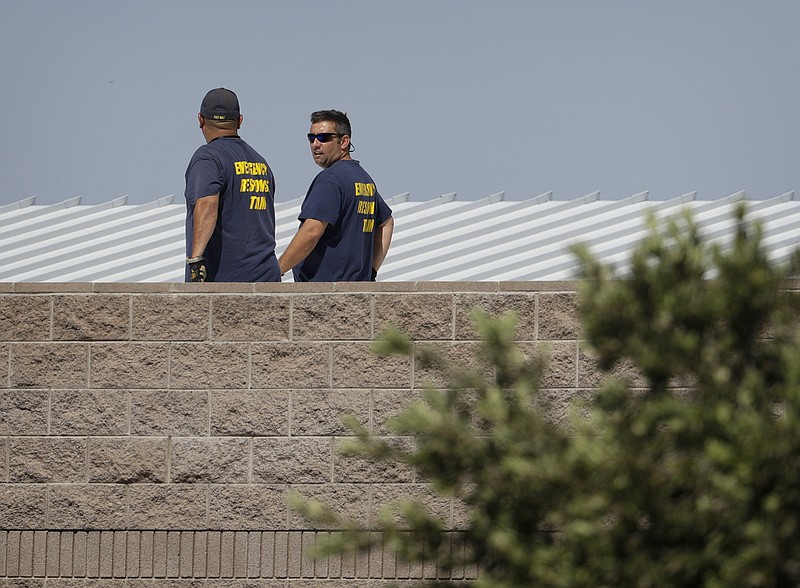LAS VEGAS (AP) - Investigators say they're puzzled by a significant amount of mercury found at a Las Vegas middle school days after a few dribbles of the neurotoxin was first discovered and forced more than 1,000 students into a quarantine that lasted overnight.
The U.S. Environmental Protection Agency said Monday that more than a quarter cup (59 milliliters) of the element has been cleaned up so far at Walter Johnson Junior High School.
"It's a pretty significant amount. It's definitely more than a thermometer-worth," said EPA spokesman Rusty Harris-Bishop. "I don't know how you would get a hold of it" in that quantity.
No illnesses have been reported and investigators so far have found that the overall exposure rate remains low, though the EPA said certain parts of the school, including gym and locker room areas, had mercury detected at as much as 10 to 15 times above safe levels prior to the cleanup.
Classes at the school were cancelled Monday for a third day. School is expected to reopen Tuesday.
High levels of exposure can cause mercury poisoning, with symptoms including muscle weakness and speech, hearing and walking impairment, according to the EPA.
The Clark County School District believes a student brought in the mercury but there was no malicious intent. An investigation into how it got to the school is being led by school police. No one has come forward to acknowledge ownership or provided information about the mercury's origin.
Experts said the element can be found in old thermometers and thermostats that began going out of favor decades ago, as well as through gold-mining equipment.
Dr. Cathleen Clancy, associate medical director at the National Capital Poison Center, a free, nonprofit calling center, said the quarter cup of mercury found isn't an unthinkable amount and that the volume doesn't necessarily translate to inherent toxicity.
"I've never been a 7th grader surfing the internet but I bet they're very, very talented," Clancy said. "I wouldn't be surprised (if) you could order it ... you can order far more poisonous things."
Mercury is a naturally occurring liquid metal that is found in the environment and generally poses little risks as long as it stays in its elemental state. It can be dangerous if it is vaporized by heat, such as through the suction of a vacuum during household cleaning or evaporation over time, Clancy said.
Traces of the substance also known as quicksilver likely already exist in schools, particularly in old science labs. Proper cleanup, though costly, can easily secure a campus, as spills have been reported in schools over the years with some regularity.
"It's a very unusual substance. If you ever see it, you'd be very tempted to play (with) it. It's very alluring because of the way it moves around," Clancy said.
The mercury was first found at the Las Vegas school Wednesday, when a group of students was seen playing with five to 10 drops of it at the gym. The hazmat situation that lasted until 5 a.m. Thursday prompted the largest decontamination effort in the history of the school district - the fifth-largest school system in the country - and Las Vegas fire department.
The overnight response angered many parents who said they weren't kept informed as their children were held and criticized the school for the full-blown screening process that they didn't necessarily consent to.
It took 17 hours for investigators to screen the 1,300 people at the school in potential danger of exposure.
At least 50 of the 1,200 students were found contaminated and had to be cleaned that night.
The EPA has so far checked 80 homes in the community among the group of students who were noted for contamination. One family has been displaced while awaiting EPA cleanup in their home, which officials pointed to as a sign that contamination isn't widespread.
___
Follow Sally Ho at twitter.com/_sallyho. Her work can be found at http://bigstory.ap.org/journalist/sally-ho .
